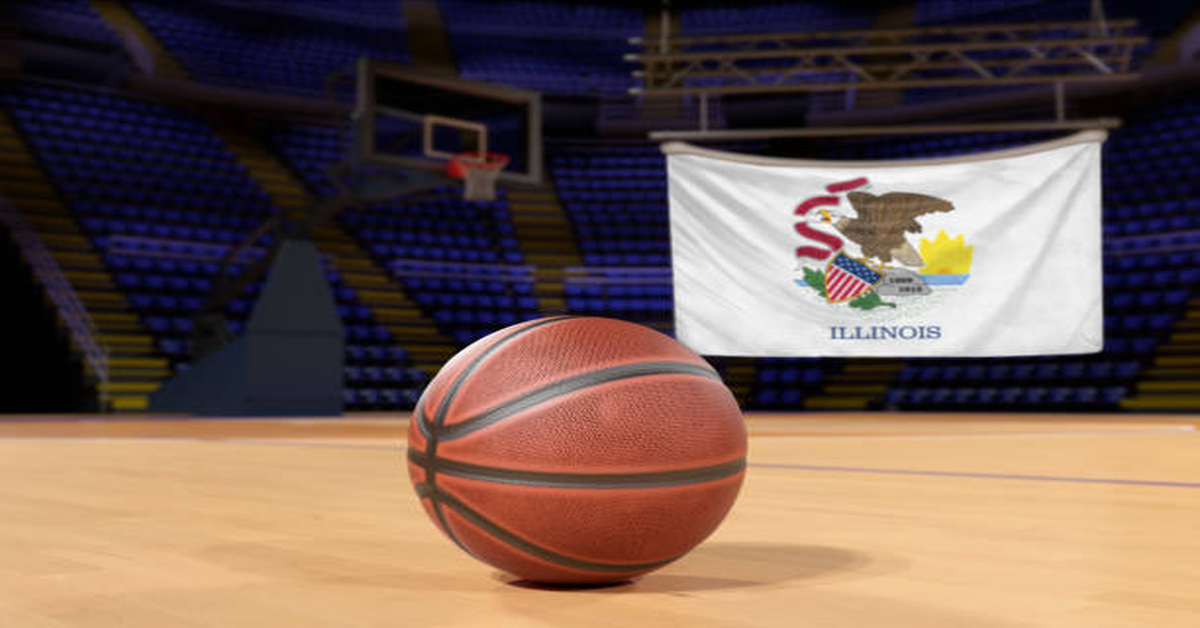Basketball holds a sacred place in American sports, and in the state of Illinois, it has become a symbol of pride, perseverance, and identity. From high school courts in small towns to the roaring arenas of the University of Illinois, basketball has developed into more than a game — it is a cultural bond connecting generations. Illinois basketball, both at the collegiate and state level, represents a deep-rooted tradition that combines raw talent, disciplined coaching, and passionate community support. Over the decades, Illinois basketball has produced legends, witnessed thrilling rivalries, and consistently ranked among the most competitive programs in the nation.
This article offers a complete exploration of Illinois basketball — its origins, growth, collegiate powerhouses, iconic players, coaching philosophies, and its influence on the state’s athletic identity. Through detailed insights, statistical tables, and historical analysis, we’ll understand why Illinois remains one of the beating hearts of American basketball.
1. Origins of Basketball in Illinois
Basketball found its way to Illinois in the early 20th century, just a few years after Dr. James Naismith invented the game in 1891. By the early 1900s, schools and community centers in Illinois had begun forming basketball clubs. The state’s geographic diversity — with bustling cities like Chicago and quiet towns across the Midwest — created fertile ground for local tournaments and interschool rivalries.
By the 1920s, high school basketball became a community spectacle. Towns would gather in gymnasiums to support their teams, creating traditions that continue even today. The Illinois High School Association (IHSA) played a pivotal role in organizing and promoting structured competition. Over time, it became clear that basketball wasn’t just a sport in Illinois — it was a way of life.
2. Growth of High School Basketball
Illinois high school basketball gained national recognition for its competitiveness and passion. Many of the sport’s greatest players began on Illinois high school courts, developing their fundamentals before achieving fame in college or professional leagues.
| Era | Notable Teams/Schools | Impact on State Basketball |
|---|---|---|
| 1930s–1950s | Centralia, Quincy, Peoria Manual | Established foundation for competitive state tournaments |
| 1960s–1980s | King, Simeon, Proviso East | Produced early NBA-level talent and top collegiate recruits |
| 1990s–2000s | Whitney Young, Chicago Crane | Became breeding ground for modern elite athletes |
| 2010s–Present | Simeon, Whitney Young, Morgan Park | Continued dominance and NBA-level player development |
The IHSA State Championship Tournament, one of the oldest in the nation, became a tradition celebrated by thousands. Legendary matchups and regional rivalries helped define Illinois’ identity as a basketball state. Cities like Chicago, Peoria, and Springfield developed strong athletic programs that inspired youth across the state.
3. The University of Illinois and the Rise of Collegiate Basketball
When people talk about “Illinois basketball,” they often refer to the University of Illinois Fighting Illini, the flagship program representing the state at the collegiate level. Founded in the early 1900s, the Illinois men’s basketball program has long been a cornerstone of the Big Ten Conference — known for its discipline, defense, and technical excellence.
Early Development
The team began intercollegiate play in 1906. Under early coaches like Ralph Jones and Douglas Mills, the Illini built a reputation for strong fundamentals and tactical play. They claimed their first Big Ten Championship in 1915, setting the tone for decades of competitive basketball.
Golden Era (1940s–1950s)
The 1940s marked the emergence of Illinois as a national basketball power. With stars like Andy Phillip and Johnny Kerr, the Fighting Illini became one of the Big Ten’s dominant forces. Their disciplined play style and defensive coordination helped establish their national reputation.
Modernization (1970s–1990s)
During the late 20th century, Illinois basketball evolved with the changing game. The 1988–89 “Flyin’ Illini” team, coached by Lou Henson, became one of the most iconic squads in school history, reaching the NCAA Final Four. That team — featuring Nick Anderson, Kendall Gill, Kenny Battle, and Stephen Bardo — combined athleticism, teamwork, and personality, leaving an enduring legacy in Illinois sports history.
| Decade | Head Coach | Major Achievement |
|---|---|---|
| 1940s | Douglas Mills | Big Ten dominance, early NCAA presence |
| 1980s | Lou Henson | “Flyin’ Illini,” Final Four appearance (1989) |
| 2000s | Bruce Weber | NCAA Runner-Up (2005) |
| 2020s | Brad Underwood | Modern resurgence, consistent tournament appearances |
4. The Iconic 2004–2005 Illinois Team
The 2004–05 Fighting Illini season remains one of the most celebrated in NCAA history. Coached by Bruce Weber and led by players like Deron Williams, Dee Brown, and Luther Head, Illinois achieved a near-perfect season with a 37–2 record. Their chemistry, unselfish ball movement, and precision offense redefined modern college basketball.
Team Highlights:
| Player | Role | Key Strengths |
|---|---|---|
| Deron Williams | Point Guard | Leadership, passing, court vision |
| Dee Brown | Shooting Guard | Speed, perimeter defense, energy |
| Luther Head | Guard | 3-point shooting, clutch scoring |
| James Augustine | Forward | Rebounding, interior presence |
| Roger Powell Jr. | Forward | Strength, scoring consistency |
Illinois reached the 2005 NCAA Championship Game, losing narrowly to North Carolina. Despite the loss, that season immortalized the program and attracted new generations of fans to Illinois basketball.
5. Illinois Basketball Philosophy and Style of Play
Illinois basketball has long been recognized for its balance between defense and efficiency. Unlike programs that focus solely on athleticism, the Illini have emphasized strategy, teamwork, and discipline.
Core Principles of Illinois Basketball:
- Defense First: Every great Illinois team has built success through relentless defense and rebounding.
- Team Chemistry: Selflessness and teamwork are emphasized over individual statistics.
- Adaptability: Coaches tailor strategies to match players’ strengths and evolving NCAA trends.
- High Basketball IQ: Players are trained to think two steps ahead — understanding tempo, spacing, and situational plays.
Under Brad Underwood, Illinois adopted a fast-paced yet efficient approach — combining strong post play, perimeter shooting, and defensive versatility. This evolution has allowed Illinois to compete effectively in the modern Big Ten landscape.
6. Impact of Illinois High Schools on National Basketball
Illinois’ influence extends beyond the college level. The state consistently produces NBA-ready talent through its high school programs. Schools like Simeon Career Academy, Whitney Young, and Proviso East have become national talent pipelines.
| Player | High School | Notable Career Achievement |
|---|---|---|
| Derrick Rose | Simeon Career Academy | NBA MVP (2011) |
| Anthony Davis | Perspectives Charter | NBA Champion (2020) |
| Jalen Brunson | Stevenson High | NCAA Champion, NBA All-Star |
| Andre Iguodala | Lanphier High | NBA Finals MVP (2015) |
| Ayo Dosunmu | Morgan Park | Illinois standout, NBA guard |
The consistent emergence of elite players highlights Illinois’ commitment to youth basketball development, coaching quality, and community engagement.
7. Women’s Basketball in Illinois
While the men’s program often takes the spotlight, women’s basketball in Illinois has seen significant growth and success. The University of Illinois women’s team has gradually built a reputation for resilience and improvement under coaches who emphasize both academics and athletics.
High schools and universities across the state have promoted women’s sports through investments in facilities, scholarships, and equal participation opportunities. Many Illinois-born athletes have gone on to play in the WNBA and professional leagues abroad, proving that basketball excellence in Illinois is not limited by gender.
8. Coaching Legacy and Leadership
Illinois basketball’s success owes much to its legendary coaches. Leadership has always been central to the Illini philosophy. Coaches like Lou Henson, Bill Self, Bruce Weber, and Brad Underwood shaped not only tactics but also culture, emphasizing discipline, respect, and excellence.
| Coach | Tenure | Key Achievement |
|---|---|---|
| Lou Henson | 1975–1996 | Final Four (1989), 423 wins |
| Bill Self | 2000–2003 | Big Ten success, national recognition |
| Bruce Weber | 2003–2012 | NCAA Finals (2005), 200+ wins |
| Brad Underwood | 2017–Present | Big Ten Championship (2021), player development focus |
These leaders created systems that maximized player potential, developed future coaches, and kept Illinois among the most respected programs in the Big Ten.
9. Rivalries and Regional Pride
Illinois basketball’s story would be incomplete without its intense rivalries. The fiercest competition exists between Illinois and Indiana, two neighboring states that share basketball obsession. The Illinois–Indiana games are always emotional, with fans packing arenas in orange and blue, chanting in unison.
Other notable rivalries include matchups against Iowa, Michigan State, and Wisconsin — all traditional Big Ten powerhouses. These rivalries not only test athletic ability but also embody regional pride and identity. Each game is more than just a contest; it’s a celebration of the Midwest’s basketball heritage.
10. Fan Culture and Community Involvement
The passion of Illinois basketball fans is unmatched. From students in Champaign to lifelong supporters in Chicago, the orange-and-blue colors unite people across generations. Home games at the State Farm Center often attract sell-out crowds, turning the arena into a cauldron of noise and enthusiasm.
Beyond the university, Illinois’ community-driven basketball culture manifests in local leagues, youth camps, and charity tournaments. Programs like Illini Summer Camps and community outreach initiatives ensure that the next generation inherits not only skills but also values — teamwork, sportsmanship, and perseverance.
11. Illinois Basketball in the Modern Era
In recent years, under Coach Brad Underwood, Illinois has experienced a powerful resurgence. With the emergence of stars like Ayo Dosunmu, Kofi Cockburn, and Terrence Shannon Jr., the Illini have returned to national prominence. The team’s mix of aggressive defense and balanced scoring has earned consistent NCAA Tournament appearances.
Recruiting strategies now combine local talent with international prospects, ensuring a steady pipeline of skilled players. The introduction of advanced analytics and sports science has also improved player conditioning, reducing injuries and increasing efficiency.
12. Statistical Overview: Illinois Men’s Basketball Program
| Category | Statistic |
|---|---|
| Founded | 1906 |
| Conference | Big Ten |
| NCAA Tournament Appearances | 32+ |
| Final Four Appearances | 5 |
| All-Time Wins | 1,900+ |
| Conference Titles | 17 Regular Season, 3 Tournament |
| Home Arena | State Farm Center, Champaign, IL |
| Mascot | Fighting Illini |
This record reflects consistency and longevity — a testament to Illinois’ enduring relevance in collegiate basketball.
13. Illinois Basketball and Player Development
One of Illinois’ greatest contributions to basketball is its emphasis on player development. The state has produced not only talented athletes but also intelligent, well-rounded individuals who succeed beyond the court.
Illinois basketball programs emphasize:
- Fundamentals first: Shooting mechanics, footwork, and spacing.
- Character education: Sportsmanship, leadership, and academic balance.
- Physical fitness: Conditioning programs that reduce injury and enhance performance.
- Mentorship: Alumni engagement to guide current players.
This holistic approach has ensured that Illinois continues producing high-quality players respected both on and off the court.
14. The Future of Illinois Basketball
As the landscape of college athletics changes with new NIL (Name, Image, and Likeness) policies, Illinois is positioning itself as a leader in athlete empowerment. Players now have opportunities to monetize their brands while pursuing education — something Illinois supports through transparent policies and partnerships.
Investments in facilities, analytics, and coaching have placed the Illini at the forefront of NCAA innovation. The future looks bright, with young recruits showing promise and the program’s rich heritage continuing to attract national attention.
15. Illinois Basketball’s Cultural and Economic Impact
Basketball’s role in Illinois goes beyond entertainment. It boosts local economies, fosters youth engagement, and strengthens community identity. Local tournaments bring business to towns, while state championships unite cities and families. Moreover, basketball scholarships have opened doors for countless students to pursue higher education.
Economically, college basketball contributes millions to Illinois’ sports economy through ticket sales, tourism, merchandise, and broadcasting rights. Culturally, it brings people together, transcending social and economic barriers.
16. Why Illinois Basketball Matters
Illinois basketball embodies the essence of what makes sports meaningful — passion, teamwork, history, and evolution. From dusty high school gyms to the grandeur of the NCAA Tournament, Illinois has continually demonstrated excellence and adaptability.
It’s not merely about winning games but building character, inspiring dreams, and keeping the spirit of competition alive for future generations.
FAQs about Illinois Basketball
1. When did Illinois basketball begin?
The University of Illinois men’s basketball team started in 1906 and quickly became one of the Big Ten’s founding powers.
2. What is Illinois basketball best known for?
Illinois basketball is known for its disciplined play, strong defense, teamwork, and producing NBA-caliber players.
3. Who are some famous Illinois basketball players?
Notable names include Deron Williams, Dee Brown, Nick Anderson, Kendall Gill, and Ayo Dosunmu — all Illinois legends.
4. What is the Fighting Illini’s home arena?
The team plays at the State Farm Center in Champaign, Illinois, one of the most iconic venues in college basketball.
5. How successful is Illinois in NCAA tournaments?
Illinois has made over 32 NCAA tournament appearances, reached five Final Fours, and finished as national runner-up in 2005.









